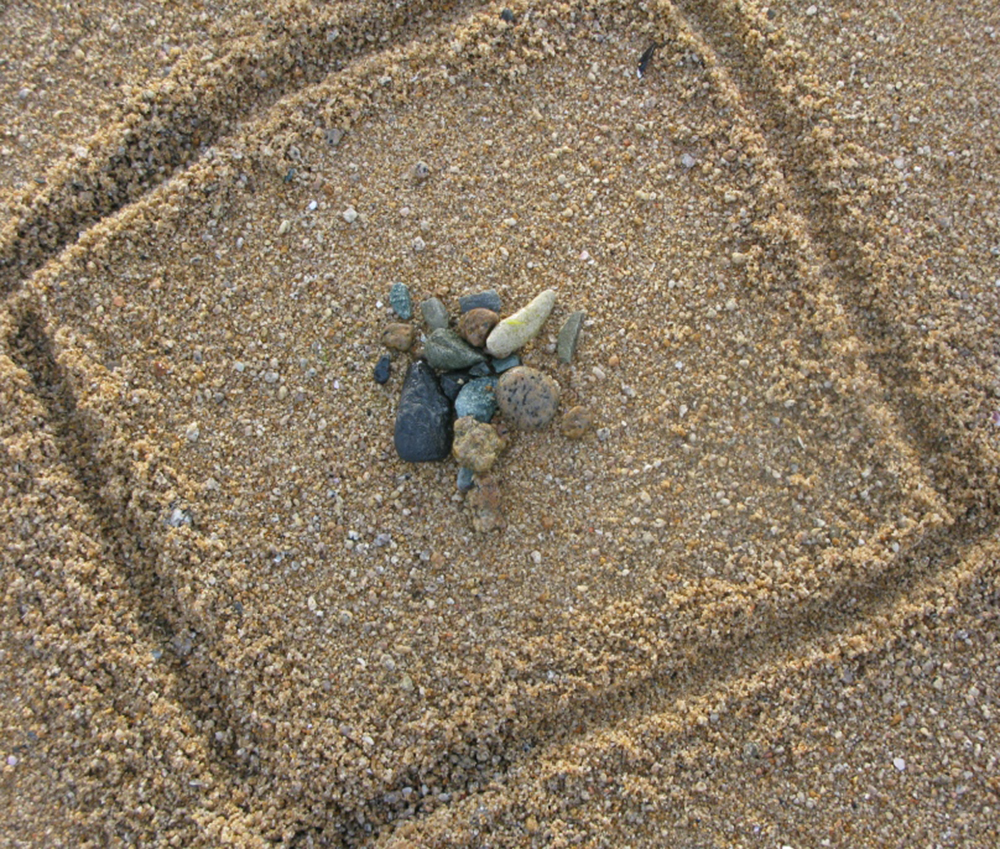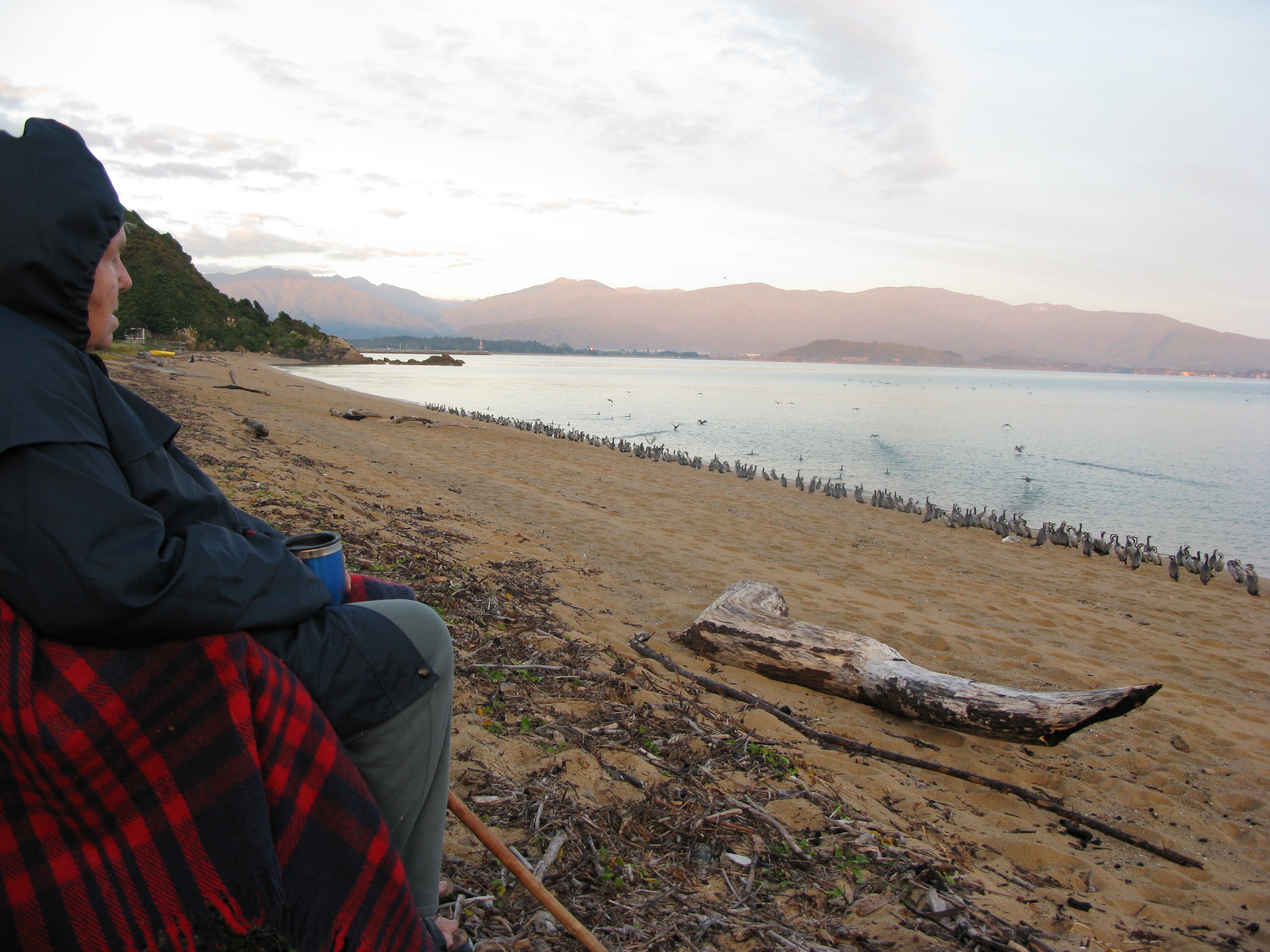Shag life still shrouded in mystery
As the first shafts of morning light touch the golden sands of Tata Beach, near Takaka, silhouettes of small groups of shags, and individual birds can be seen arriving, silently winging in from the nearby Tata Islands.
Sometimes as few as about 200 birds arrive and at other times there can be up to a few thousand! There seem to be more birds in the winter but they are seen throughout the year along the shoreline. The birds are not bothered by a quiet audience.
They drop into the surf and start diving for stones. After each dive they surface and flap their wings noisily, before diving again. Soon they waddle up onto the beach where they extend their necks and ‘spasm’ their throats and crop, rattling the stones they have swallowed.
This action is thought to help dislodge small parasitic worms from their digestive tract, which, together with the stones, are then regurgitated onto the sand in small piles.
While on the beach shags also begin their morning preening – feathers are carefully “combed” and then wings are spread and shaken to help them dry.
A few red-billed gulls intermingle with the shags, scavenging for the worms that have been dislodged.
Several shags were seen to collect quite large pieces of seaweed or twigs to take back to the Tata Islands possibly for later use as nesting material which usually occurs in July.
All of this activity takes place in less than an hour after which it was as though some sort of signal beckoned the shags back to the nearby islands and beyond to the waters of Golden Bay. This could have been a scare, as response on other occasions they have been observed to fly off individually or in groups.
An inspection of the beach was made after the shags had flown away.
The small piles of regurgitated material left behind contained pebbles up to the size of a ten cent coin together with a few worms missed by the gulls.
This interesting event is repeated every morning just on daybreak.
Despite the very early, cold start to the day, hugging hot water bottles and dressed in layers of thermals, our attention was fully focused on these amazing birds, which we could observe at very close range, without disturbing them.
If you are ever in Golden Bay this is a “must do” memorable sight to see.
Shags from the Tata Island colony fly further afield to repeat this ritual on other beaches, including Patons Rock, Taupo Point and Wharewharangi.
The estimated population of spotted shags in NZ is between 10,000 and 50,000 birds.
As many as 5,000 shags have been counted at Tata Beach but in recent years the numbers have been decreasing. Many questions are still unanswered about their unusual habits.
To see a slideshow of images see here


